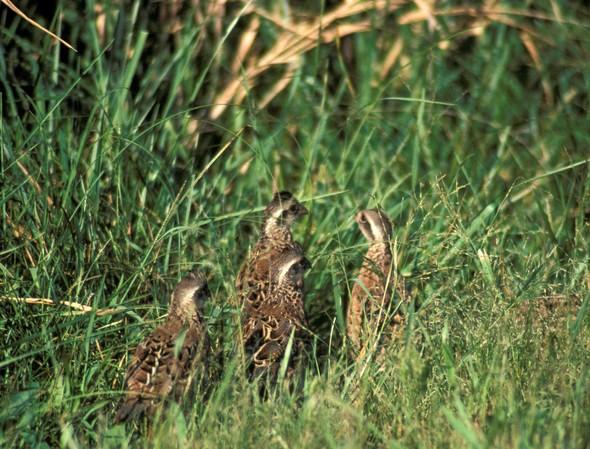
Xplor reconnects kids to nature and helps them find adventure in their own backyard. Free to residents of Missouri.


































Stay in Touch with MDC news, newsletters, events, and manage your subscription

Xplor reconnects kids to nature and helps them find adventure in their own backyard. Free to residents of Missouri.

A monthly publication about conservation in Missouri. Started in 1938, the printed magazine is free to residents of Missouri.


Kansas City, Mo. – Bobwhite quail need quality places to feed, rear young, and hide from predators. The Missouri Department of Conservation (MDC) suggests late summer is a good time to evaluate quail habitat on farms and acreages. For more quail, or to keep “bob-white” whistles as a summer sound, check to see if vegetation meets quail needs now and for the winter to come.
Be cautious about mowing grassy or weedy spots in field edges and pastures, as some may conceal young birds that will mature in winter. Avoid or postpone unnecessary mowing to boost quail numbers.
“Oftentimes, it is this late summer season when people start mowing odd areas, and they wipe out decent cover,” said Kyle Hedges, MDC wildlife management biologist.
Missouri quail research has shown that more than 35 percent of all quail nests are set to hatch in August. August is critically important for those adult birds that had a previous failed nest, or for whatever reason, they didn’t get around to nesting until late summer. Furthermore, many young broods from nests that hatched in July are feeding and growing.
Late summer is a good time to evaluate the plant mix, whether it is a cover strip beside a field or an entire pasture. Does habitat have a good mix of forbs such as native wildflowers as well as grasses? The wildflowers host insects and provide seeds that broods and coveys need for food. They also provide openness at ground level that helps birds easily move around to feed or escape predators.
“If the fields are all rank grass and lacking forbs, landowners can make plans for some dormant-season disking to improve the forbs next summer,” Hedges said.
If both forbs and grasses are growing too thick for ground-dwelling birds to easily move about, late winter burns can create better conditions and boost brood survival the following summer. Late summer is also a good time to spot spray and eliminate invasive species such as sericea lespedeza. Landowners can note encroachment into grasslands of unwanted trees and make plans for removal.
Another summer check is walking fields to see if the plant mix is hosting insects that quail feed upon.
“If you walk through a field and don’t have insects bouncing off your pants, it’s probably no suitable brood rearing habitat,” Hedges said. “Almost always, the lack of insects is due to a lack of forb numbers or plant species diversity.”
A late summer need for quail is thickets with shrubs that provide both shade and air flow at ground level, such as wild plum, sumac, rough-leaved dogwood or blackberry.
“Quail need to escape the brutal temps of midday, and they need thickets or some surrogate like edge feathering to do that,” Hedges said. “Just having thickets isn’t enough, you need to look at those thickets and make sure they don’t have an understory of fescue or some other non-native making them worthless. I want bare ground under there, so the birds can get some shade, but also have some air flow.”
MDC staff can help private landowners with quail habitat. In some cases, cost share programs for habitat improvement are available.
“I would much rather see a farm now than in December,” Hedges said. “I can get a better feel for what is lacking, which 99 percent of the time is good brood habitat.”
To learn more about how MDC can help private landowners with wildlife habitat, visit https://mdc.mo.gov/property. For tips on bobwhite quail habitat management, visit https://short.mdc.mo.gov/Z8Q.